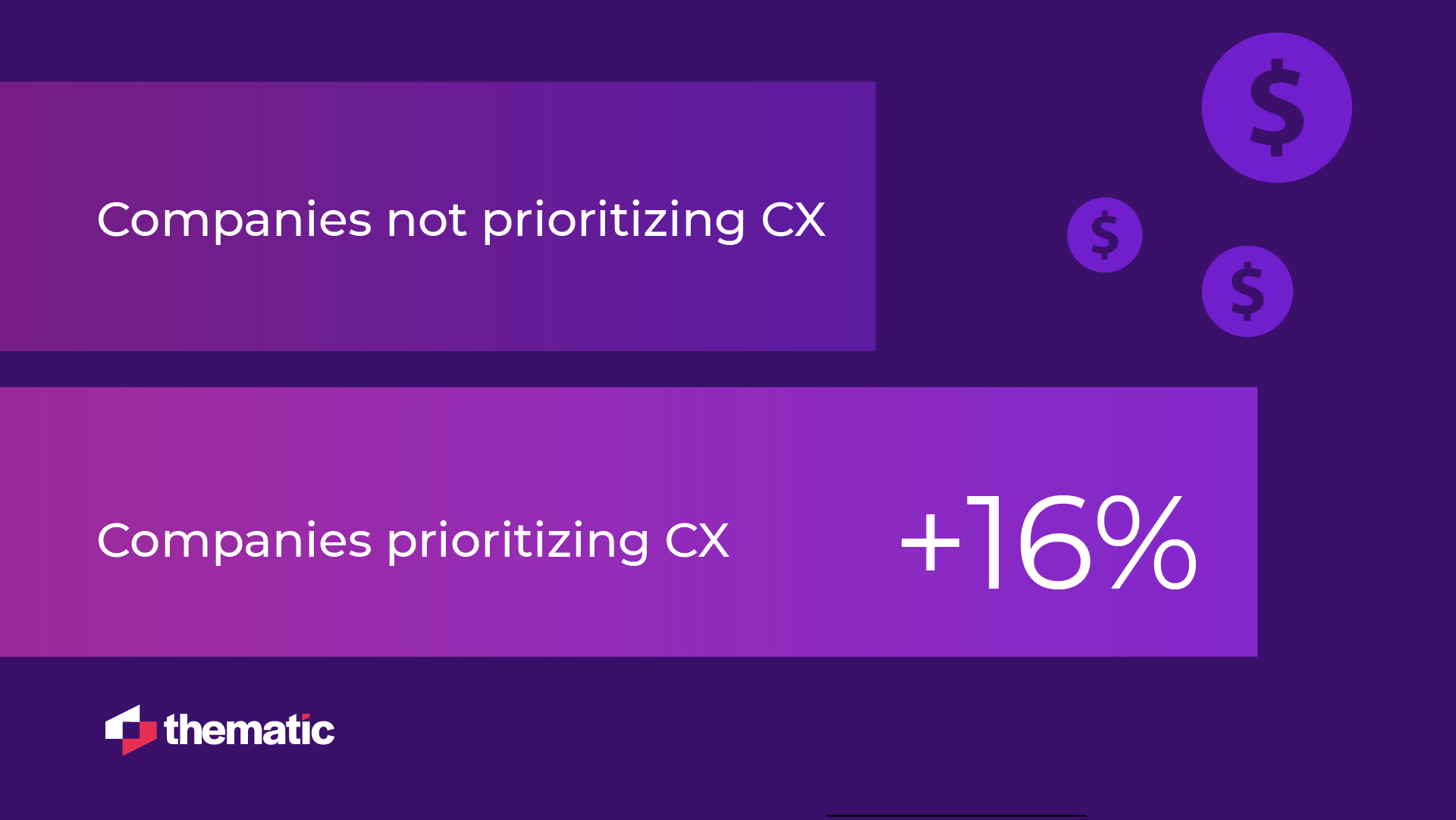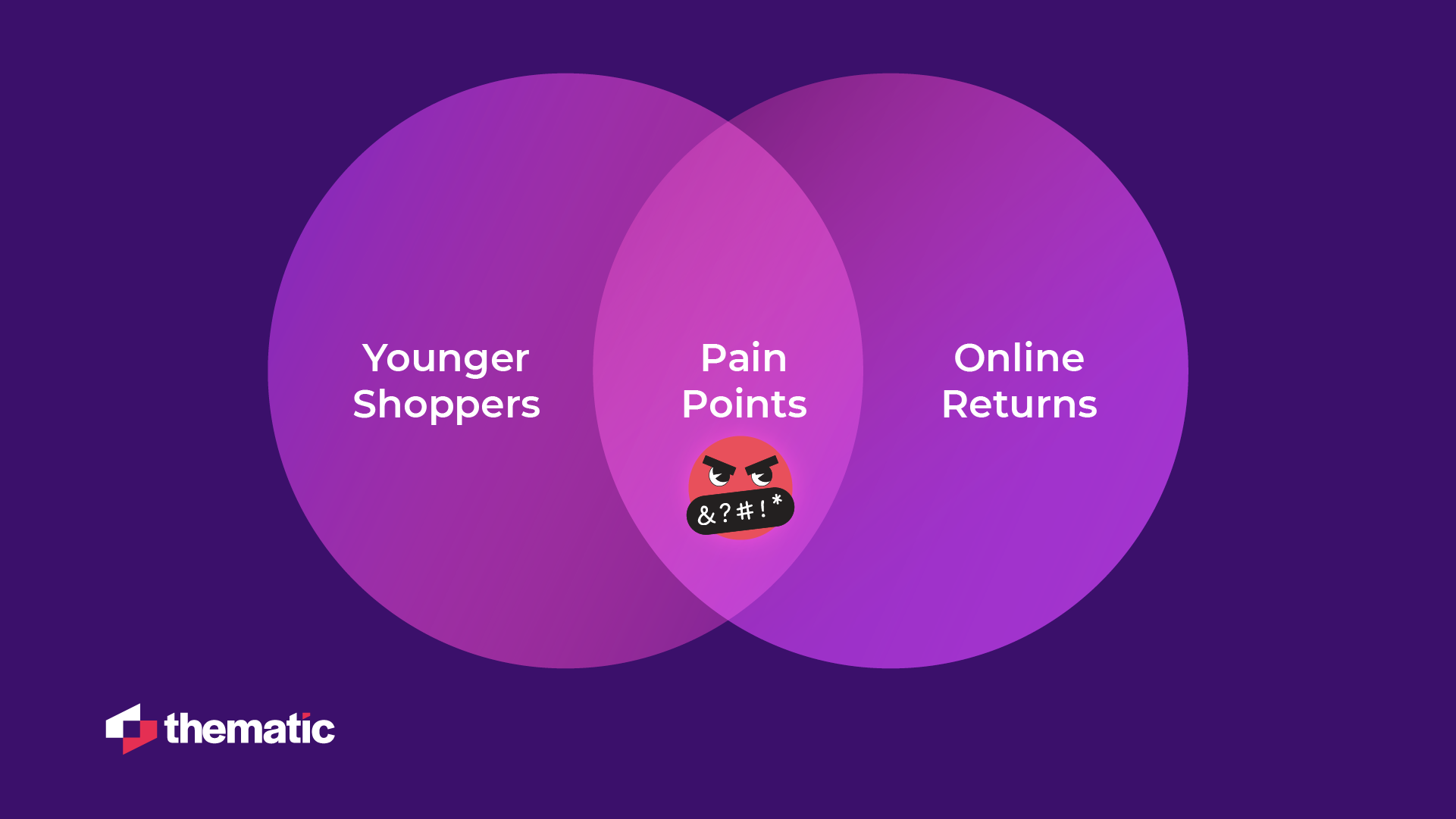
Don't let bad customer experience (CX) ruin your business! Learn from these 17 statistics and find out how to improve CX with AI-powered insights.

In the high-stakes game of customer experience (CX), ignorance isn’t bliss – it’s a death sentence for your bottom line. The importance of customer experience is often underestimated, leading to significant business losses. You’re playing a dangerous game if you’re not actively listening to your customers.
By sifting through mountains of unstructured data – reviews, surveys, social media posts – AI can pinpoint the recurring themes and trends that truly matter. This isn’t just about identifying problems; it’s about understanding the why behind them, empowering you to make strategic decisions that resonate with your customers’ deepest needs.
These 17 statistics reveal the hidden costs of neglecting customer experience (CX) – from plummeting revenue and tarnished reputations to missed opportunities for innovation and growth.

Investing in customer experience isn’t just about warm fuzzies; it’s a hard-nosed business strategy. PWC’s research reveals that companies prioritizing CX can charge a premium of up to 16% for their offerings.
Customers are willing to pay more for a seamless, personalized experience, highlighting the tangible financial value of investing in CX initiatives. A positive customer experience can lead to customers being willing to pay more for products and services, sharing their positive experiences with others, and ultimately driving increased sales and profitability. Businesses can unlock a powerful revenue-generating engine by prioritizing customer satisfaction and loyalty.
Successful CX initiatives don’t just stop at the checkout counter. This statistic reveals that high-performing CX programs are more than twice as likely to prioritize the entire customer journey, from initial awareness to post-purchase support. This holistic approach ensures a consistently positive experience that nurtures long-term loyalty, advocacy, and improves customer retention.
It’s easy to assume that customers prefer automated interactions. However, this statistic reveals a surprising truth: most consumers still crave the human touch. They want empathy, understanding, and the ability to connect with real people when they have questions or concerns. Delivering an exceptional customer experience hinges on this human interaction, ensuring that customers feel valued and understood.

In today’s swipe-centric and mobile-driven environment, patience is wearing thin. Customers expect prompt responses to their inquiries, and this statistic reveals that over half of them expect a response within just one hour. Poor customer service, such as slow response times, can lead to customer dissatisfaction, disengagement, and loss of revenue. This highlights the need for businesses to prioritize real-time customer service and invest in resources that enable them to address customer concerns quickly.

AI-powered software to transform qualitative data at scale through a thematic and content analysis.
Loyalty isn’t a given; it’s earned with every interaction. This statistic reveals the fragility of customer relationships, with a staggering 86% of consumers willing to abandon a brand after just two negative experiences. A poor customer experience can lead to a high percentage of customers leaving a brand, highlighting the importance of consistent quality and attentiveness throughout the customer journey.
The impact of a single negative experience can be catastrophic. This statistic highlights the unforgiving nature of today’s consumers, with a significant percentage willing to walk away from a brand after just one misstep. For global brands, the stakes are even higher, with nearly a third of customers worldwide ready to jump ship after a single negative encounter. Maintaining loyal customers requires consistently positive experiences, as loyal customers are crucial for driving revenue growth and brand loyalty.
Almost half of US consumers have actively abandoned a brand in the past year due to negative customer experiences. This staggering statistic paints a grim picture of the consequences of neglecting CX. Dissatisfied customers don’t simply fade away quietly; they take their business elsewhere, often voicing their frustrations along the way, which can significantly erode brand loyalty.

Exceptional customer service isn’t just about resolving issues; it’s a catalyst for repeat business. This statistic underscores the direct correlation between positive experiences and customer loyalty. By analyzing customer data, businesses can understand preferences and behaviors, delivering a personalized experience that makes customers feel valued, heard, and supported. This, in turn, increases the likelihood of them becoming repeat buyers and brand advocates.
Exceptional customer service doesn’t just retain customers; it turns them into passionate brand advocates. The latest customer experience statistics reveal the immense power of positive word-of-mouth marketing, with three-quarters of customers willing to recommend a company solely based on the quality of their service interactions. This highlights the exponential potential of investing in a customer-centric approach, where happy customers become your most effective marketing channel.
Customer service isn’t just about efficiency; it’s about creating a human connection. This statistic reveals that most consumers prioritize friendly interactions, and a negative experience can be enough to drive them away. This underscores the importance of training staff in empathy, communication, and problem-solving and fostering a company culture that values customer relationships. The growing demand for better customer experiences is driving the expansion of the customer experience management market, highlighting the need for businesses to invest in comprehensive customer service strategies.
Returns are an inevitable part of the retail landscape, but they don’t have to be a source of anxiety for your customers. Top customer experience statistics highlight the importance of addressing return-related anxieties, as they can significantly impact customer retention and revenue growth. This statistic underscores a significant pain point in the post-purchase experience: the fear of lost returns. This worry can deter customers from making purchases in the first place, or worse, lead to negative reviews and lost loyalty if a return goes missing.

The return process doesn’t end when a customer ships an item back. This statistic highlights the frustration many shoppers experience when trying to track the progress of their return. A lack of transparency and communication can lead to uncertainty, anxiety, and a negative perception of the brand’s overall service. A smooth return process is crucial for customer retention, as it ensures a positive customer experience and encourages repeat business.
Have you ever felt like navigating a maze when trying to get help from a company? This statistic reveals that more than half of consumers feel like they’re talking to disconnected departments, rather than a unified brand. This fragmented experience can lead to frustration, wasted time, and ultimately, a negative perception of the company’s competence and customer focus. A unified approach is essential for delivering an exceptional customer experience, ensuring that all departments work together to provide quick, consistent, and effective support.
Trust is a precious commodity in an era of data breaches and privacy concerns. This statistic reveals a growing trend of customers becoming increasingly protective of their personal information. They’re wary of how companies collect, store, and utilize their customer data, and any misstep can erode their trust and loyalty.

The younger generation, accustomed to seamless digital experiences, expects the same level of convenience and ease regarding returns. This statistic highlights a generational divide in perceptions of the return process, with younger shoppers finding it particularly burdensome. This could be due to unclear instructions, lengthy processing times, or limited return options, all of which negatively impact the positive customer experience.
Instant gratification isn’t just for online shopping. This statistic highlights the positive impact of immediate refunds for in-store returns. By streamlining the process and providing instant relief, businesses can turn a potentially negative experience into a positive one, fostering customer satisfaction and maintaining loyal customers.
The return policy isn’t just an afterthought; it’s a crucial factor in purchasing. This statistic reveals that nearly half of all online shoppers make it a point to review a retailer’s return policy before completing a purchase. A clear, flexible, and customer-friendly return policy can significantly influence a shopper’s buying decision and enhance brand loyalty, while a restrictive or confusing policy can deter them from completing a transaction.

Customer experience is not a luxury but necessary for business survival and growth. Ignoring the Voice of the Customer comes at a steep price – from lost customers and tarnished reputations to missed opportunities for innovation and revenue growth.
However, with the rise of AI-powered VoC thematic analysis, businesses now have a powerful tool to transform customer feedback into actionable insights. The customer experience management market is expected to grow significantly with advancements in AI technology, highlighting the increasing demand for better customer experiences. By embracing this technology, you can better understand your customers’ needs, pain points, and preferences, enabling you to deliver exceptional experiences that drive loyalty, advocacy, and long-term success.
Ready to turn your customer feedback into a goldmine of insights? Discover how Thematic, a leading AI-powered VoC platform, can revolutionize your customer experience strategy.
Join the newsletter to receive the latest updates in your inbox.